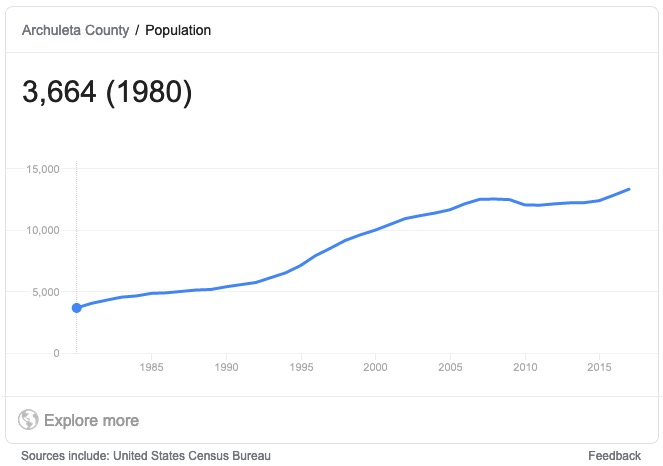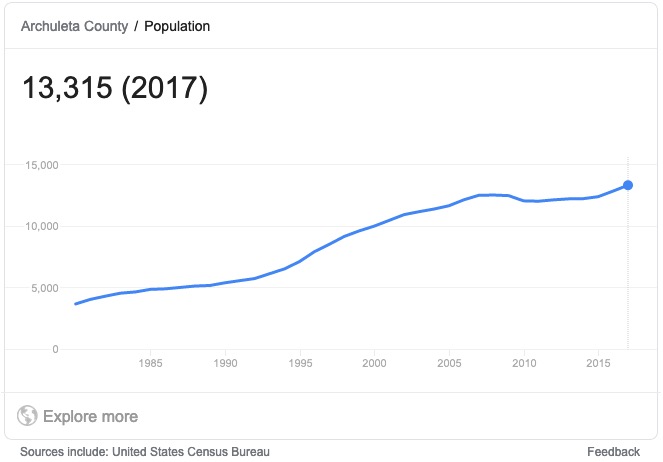Staying active isn’t just good for your health. It’s also good for your wallet. One of the best ways to maintain an active lifestyle is to choose a city that encourages and facilitates recreation…
— from Wallethub.com, “Best and Worst Cities for Recreation” by Adam McCann, July 2019
Last night at about 8:30pm, my phone made a weird buzzing noise, and when I picked it up, I saw an “EMERGENCY ALERT” on the screen.
Public Safety Alert
Due to the presence and spread of COVID-19 in Colorado, an emergency Stay at Home Order starts Thursday, March 26 at 8am. Everyone needs to stay at home except to go to an essential workplace, seek necessary medical attention or to do an essential task like going to the grocery store or walking a pet. Visit covid19.colorado.gov for more info.
At the federal level, the US Senate last night unanimously approved a $2 trillion ‘stimulus package.’ Unanimously. The bill now goes to the House of Representatives.
Here in Colorado, a new “Stay At Home” Order has been handed down by the folks in Denver. It goes into effect today at 8am and extends through April 11. (You can download the Order here.)
Yes, “Firearms stores” are allowed to remain open. So are “Pet stores and gun stores.” (Apparently, a “Firearms store” is different from a “gun store”?) Oil well drillers can continue drilling. Construction companies can continue working (but “especially for housing and housing for low income and vulnerable people.”) “Marijuana dispensaries” can remain open, as can “Liquor and marijuana” stores.
As with the previous March 24 order, almost any kind of business you can think of — outside of tourism and entertainment — is considered a “Critical Business or Operation” under this order, and is thus exempt from the “Stay at Home” requirement. As an individual, you’re allowed to shop for food and household items, you’re allowed to walk your dog, you can seek medical care. Apparently, you can play golf?
Coloradans are allowed to:
…engage in outdoor activity, such as, walking, hiking, nordic skiing, snowshoeing, biking or running. For purposes of outdoor activity, State parks will remain open to the public to engage in walking, hiking, biking, running, and similar outdoor activities but all playgrounds, picnic areas, other similar areas conducive to public gathering, and attended areas shall be closed.
But let’s all just try to stay home, shall we? I mean, isn’t that the best part of retirement?
Yesterday in Part Seven of this editorial series, I mentioned the “triple whammy” that seems to have hit Pagosa Springs, as COVID-19 infections slowly (or quickly) spread across the American landscape. A tourism industry temporarily shuttered by emergency health policies… and an oil crisis impacting two oil-dependent states — Texas and Oklahoma — states that have traditionally supplied a large percentage of Pagosa’s tourists…
These two factors might, by themselves, deal Pagosa Springs a “double whammy”. But we’ve got one more whammy to consider, because Pagosa Springs is one of those ‘gray-haired’ mountain towns where a large percentage of the citizens are older, and retired.
In the state of Colorado, the median age is about 35 years old, and about 13 percent of the population is 65 and older. In Archuleta County, the median age is about 50 — and about 26 percent are 65 and older, about twice the percentage for the state as a whole. Reports from around the globe suggest that COVID-19 — the disease caused by the novel coronavirus — is harder on seniors. A March 22 report from Spain shows 63 fatalities among people aged 60-69, 164 fatalities among the 70-79 age group, and 541 deaths in people over 80.
That’s a total of 768 fatalities for people over the age of 60. Among people under the age of 60, Spain reported 37 deaths. Only eight fatalities were reported for people under the age of 40.
From a March 18 report by the US Centers for Disease Control and Prevention:
Although the majority of reported COVID-19 cases in China were mild (81%), approximately 80% of deaths occurred among adults aged ≥60 years; only one (0.1%) death occurred in a person aged ≤19 years.
In this report, COVID-19 cases in the United States that occurred during February 12 – March 16, 2020 and severity of disease (hospitalization, admission to intensive care unit [ICU], and death) were analyzed by age group. As of March 16, a total of 4,226 COVID-19 cases in the United States had been reported to CDC… Overall, 31% of cases, 45% of hospitalizations, 53% of ICU admissions, and 80% of deaths associated with COVID-19 were among adults aged ≥65 years with the highest percentage of severe outcomes among persons aged ≥85 years. In contrast, no ICU admissions or deaths were reported among persons aged ≤19 years.
Similar to reports from other countries, this finding suggests that the risk for serious disease and death from COVID-19 is higher in older age groups.
These numbers are not intended to frighten our Daily Post readers, only to inform. But considering the population spread in Archuleta County, it would appear that a COVID-19 outbreak in our community might be more challenging to our medical professionals, on a per capita basis, than in most other Colorado cities and towns.
How did Pagosa wind up with such a large population of older folks? Was that someone’s intention?
From what I know about Pagosa’s history, it was indeed intentional. In the late 1960s, a group of developers from Arizona picked a location in southwestern Colorado to build a “recreational community.” The land was reasonably flat and bounded by dramatic mountains. Water was available, even plentiful. Local ranchers were willing to sell their property for very reasonable prices. The governments were willing to allow most any type of development, with few strings attached. A small logging and ranching town called Pagosa Springs was located a few miles to the east — far enough away that the smoke from the sawmills wouldn’t be a problem.
How to create a “recreational community”:
Sketch out 20 square miles of subdivision parcels, add some poorly constructed dirt roads, do a mediocre job of laying water and sewer pipes, build a “championship golf course” and a modest recreation center — and voila! A perfectly beautiful place to retire. Build it, and they will come.
And come, we did. Here’s the Google graph of Archuleta County’s population growth. The first version highlights the Census population in 1980. The second version shows the Census estimate for 2017. There were ‘ups and downs’ along the way, but the general direction was ‘up’.


We ended up with a community where 40 percent of the homes in our “recreational community” are owned by people who live outside of Archuleta County, and who don’t vote here, or work here. A fair portion of them live in Texas, Arizona, and Oklahoma. They are probably not here today, March 26, 2020.
But we do have a full-time population of older retirees who arrived here between 1980 and 2020. (We might find out, more precisely, just how large that elderly population is, when the 2020 Census is completed. Or we might not.)
At any rate, the third aspect of Pagosa’s triple whammy — after a shuttered tourism industry, and an oil-price-war crisis in neighboring states — is a virus that’s spreading slowly (or quickly?) and that appears to be especially dangerous to older Americans. Like us.

